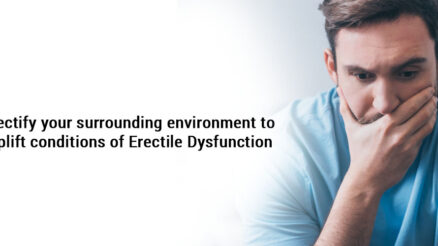
Hair loss is an unfortunate condition that millions of men around the world struggle with as they age. There are multiple forms it can take, from a receding hairline to falling out in alopeciatic clumps. While it might feel like a life sentence, there are actually many ways to combat these effects. Keep reading for four ways to improve your hair health and combat loss.
1. Lifestyle Adjustments
Before considering hair restoration options, it’s important to take a look at your lifestyle. Your day-to-day habits can actually have a strong impact on your hair’s health and ability to grow. From stress to hairstyling methods, you might be unintentionally contributing to hair loss.
Stress
Undergoing particularly stressful times can negatively affect your body, including your hair. One such stress-induced condition is known as telogen effluvium, in which hair follicles essentially shut down and stop producing hair. During this “hibernation” period, the follicles will weaken, and what remaining hair is there will often fall out over time.
Another condition that could be related to stress is alopecia. There are multiple forms of this ailment, but alopecia areata can be particularly associated with stress. This is an auto-immune disorder in which white blood cells attack healthy parts of the body — and in this case, hair. Loss can occur rapidly, usually in large clumps anywhere on the scalp or face. check out more best hair loss treatment for female uk.
In times of severe stress, it’s important for not only your hair but also your overall health that you seek assistance. Therapy and antidepressants can be a good start in your mental health journey and your hair recovery journey too.
Hair Care
The way you treat your hair can also determine its likelihood to fall out. Regularly utilizing heat tools like hair dryers or flat irons can cause weak, brittle hair. Even the shampoo you use could be doing more harm than good. Ingredients like sulfates and parabens can strip the hair of their natural oils and irritate the scalp.
Moreover, the way you style your hair can lead to hair loss. Using heavy products like styling gels and hairspray too often can damage the hair with their harsh chemical ingredients. Tight styles — like slicked-back updos or braids — can pull on the scalp, resulting in a hair loss condition known as traction alopecia.
It’s in your best interest to find products without harsh ingredients and style your hair loosely most days. Treat your hair well, and you’ll notice a difference.
2. Medication
The next option on the road to hair recovery is trying medication. The two most commonly prescribed medicines, finasteride and minoxidil, each take a different approach to stopping hair loss.
Finasteride works by halting the overproduction of the male sex hormone dihydrotestosterone. When the body makes too much of this hormone, it can cling around the hair follicles, causing them to shrink. Eventually, hair falls out and the follicles no longer grow new hair. After four to six months of regularly taking finasteride, these follicles can strengthen and begin producing hair again.
Minoxidil can be used for a wider variety of hair loss conditions. This medication works as a follicular stimulant, spurring the follicles to start growing hair again. Conditions like alopecia areata, telogen effluvium, and male pattern baldness are all regularly treated with minoxidil. You can find this medication in topical form, ranging from shampoos to gels to foaming creams. Like finasteride, this medicine usually takes four to six months of regular use before results can be seen. Additionally, both medications need to be taken consistently to see results.
3. Injections
For more serious cases of hair loss, another route you could consider involves injections. There are a couple different types of injections used for hair loss recovery, from platelet-rich-plasma to corticosteroids.
PRP therapy is used for many types of ailments, though it has been used more frequently for treating hair loss. This process works by drawing blood from the patient, then separating out the platelet-rich plasma from the blood. This plasma is then injected into the problem areas of the scalp with the hopes of rejuvenating the hair’s blood supply. When this increases, so too can the possibility of hair regrowth.
Corticosteroids work differently by combating auto-immune related hair loss conditions, like alopecia areata. Steroid injections will target the problem area and discourage the immune system from attacking that spot on the scalp. This treatment is usually given every four weeks for a period of three to six months.
While more research is needed before claiming these methods are definitely successful treatments, many people have responded well to injections. However, this is one of the more pricey types of treatment, and it can be somewhat painful.
4. Surgery
And finally, you might consider undergoing a hair transplant surgery if you suffer from a particularly stubborn hair loss condition. These are found to be widely effective, and can have permanent results.
There are different kinds of hair transplant surgeries, but they basically all follow the same format. This involves taking healthy follicles and grafting them into the problem area. After the initial recovery time, the transplanted hair should grow naturally for years to come.
While this is certainly the priciest option out there, its success rate and potential of permanence can be the best answer for many people. However, you might not be a good candidate for the procedure if you have certain pre-existing health conditions. It’s always wise to speak with a medical professional when weighing your options.
Trust the Process
Hair, unfortunately, takes a decent amount of time when it comes to growing back in. Waiting for results can seem discouraging, since most treatments take months to see a difference. And you might have to experiment with different methods of treatment, as they have varying success rates. Just remember the recovery process will take time, so do your best to be patient.





